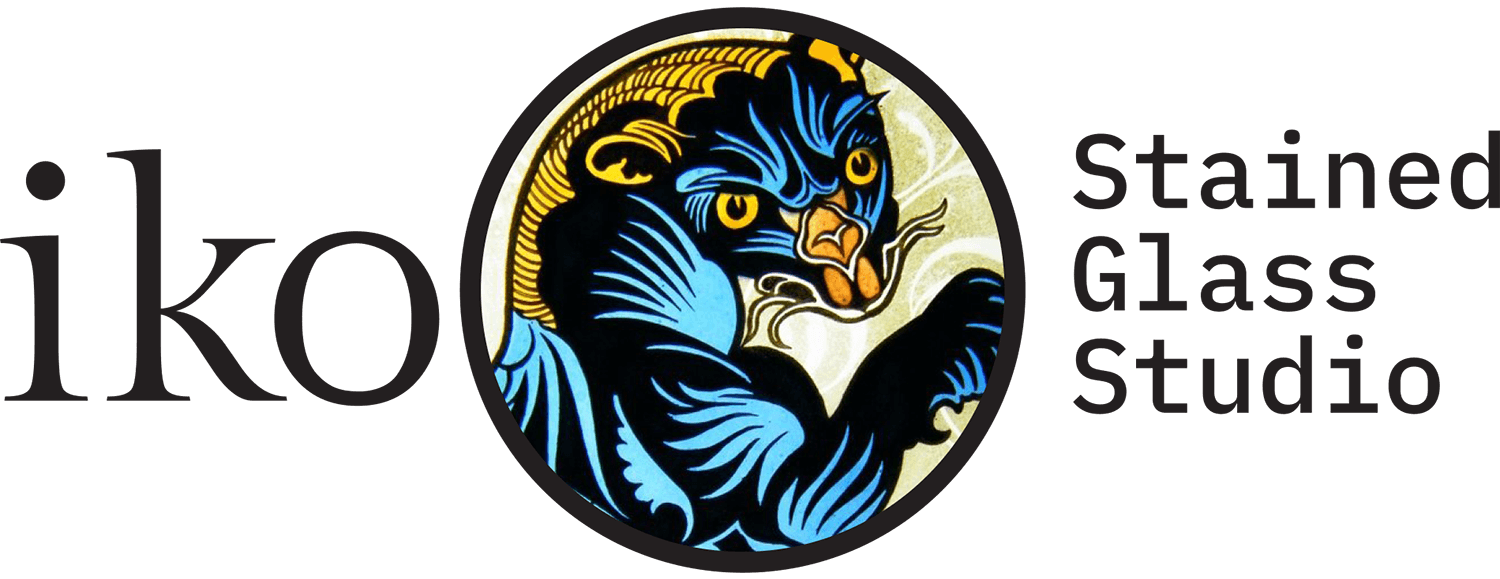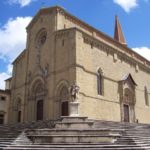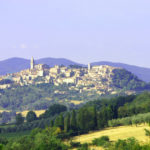Stained Glass from Certosa di Pavia
I recently returned to my hometown of Pavia where, as an adult with many years experience in Stained Glass work, I was able to fully appreciate my visit to the Certosa di Pavia.
for those who do not know, the Certosa di Pavia is a beautiful monument located north of Pavia which was built in 1396 by Gian Galeazzo Visconti, Duke of Milan. It includes a monastery and a mausoleum and is now home to a community of Cistercian monks.
The complex is built in a style from the late Gothic to the Italian Renaissance and is adorned with sculptures, mosaics and frescoes of the highest quality.
Here, I will show you the amazing collection of medieval stained glass that you can see when visiting the monument.
As is common in Italy, it is forbidden to take photographs in places of worship but, as is also common, it then proves impossible to buy a book which does justice to the stained glass.
It was, however, worth the telling-off to be get such a good photographic record of the windows.
Thanks to Corpus Vitrearum Italy I can also provide information about each the windows.
The Corpus Vitrearum Italy is an organization that aims to catalog the medieval stained glass windows in Europe; are member of this association France, Germany, Switzerland, Italy and now even the US where several medieval windows of European origin are preserved in museums.
The Corpus Vitrearum Italy is an organization that aims to catalog the medieval stained glass windows Europe; are member of this association France, Germany, Switzerland, Italy and even the US where several medieval windows of European origin are preserved in museums.
Stained Glass from Certosa di Pavia
Stained glass depicting Saint. Bernard that enchains the devil, has an inscription at the base of the window reports “opus Cristofori de Mottis 1477” (work by Cristofori de Mottis) which tells us exactly the author and the date it was created.
This stained glass window entirely painted with traditional brown glass paint and silver stain shows San Bernardo (Founder of the Carthusian order) with a chained demon at his feet which indicates the role of exorcist that tradition attributes to him.
The glass was made by Christopher de Mottis, member of the Mottis artist family of the Milan region and author of the fresco above the major altar of Milan cathedral.
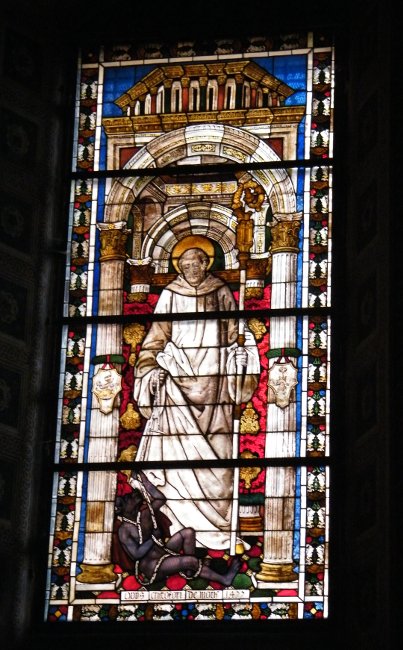
Stained glass window of the Virgin of the Annunciation, this window is divided into three panels and it is only half of the stained glass window that previously existed, the second part of the right that most likely depicted the angel of the annunciation has been lost.
This stained glass window dates back to 1475 and is the work of the monk Antonio da Pandino author of other stained glass windows in the Certosa di Pavia and Milan Cathedral.
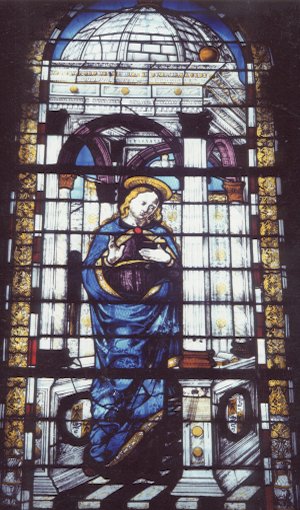
From the same artist, the monk Antonio da Pandino, is the window preserved in the right hand chapel which is dedicated to Saint Siro patron of Pavia.
This beautiful stained glass window, depicts Saint Michael killing the devil, with one hand holding with one hand the spear used to defeat Satan and the other hand holding a scale where the lighter side is represented the pure soul who prays and the other the heavy sinner soul.
An inscription in the bottom says “Antonius de Pandino me fecit” (I’ve been made by Antonio de Pandino) to confirm the author of the work.
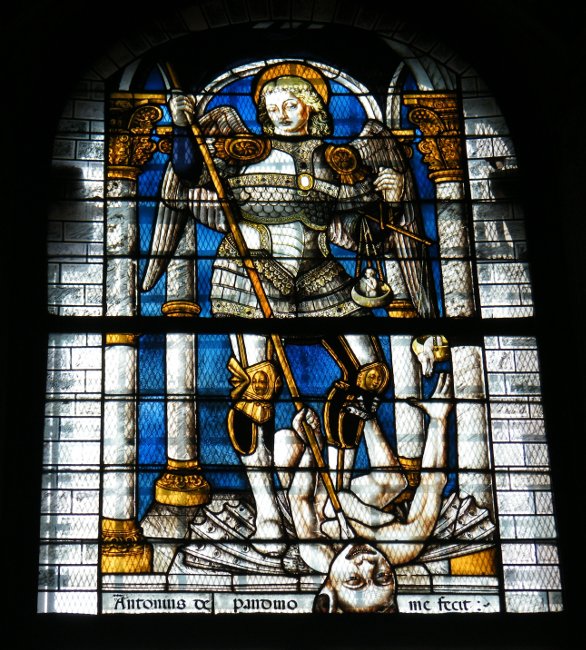
The nativity stained glass window by Cristoforo de ‘Mottis, dates from 1476.
Unfortunately this window has suffered the loss of the glass painting, a phenomenon that can occur due to various reasons, such as: when firing temperature is too low, a poor quality of paint has been used or environmental factors where the glass is kept.
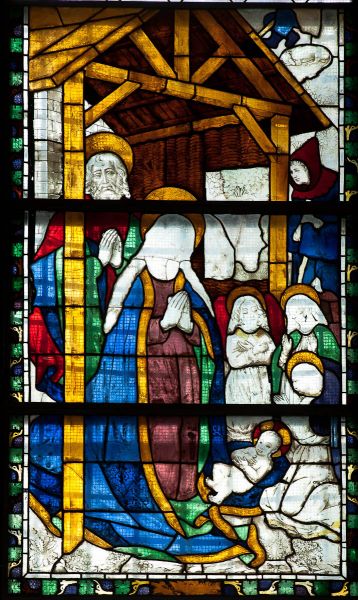
Glass windows of Saint Gervasio and Saint Protasio, the two holy martyrs twins from Milan, unfortunately for these two windows unfortunately we do not know the author and the year of production.
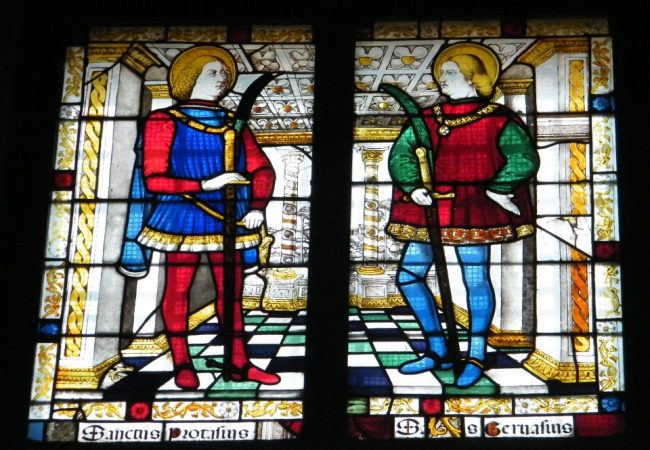
For last two windows both depicting the crucifixion, the first part of the rose window and the second kept in the apse and the Certosa, whilst both are of very good quality, we do not know either the artist of the year it was made.


If you enjoyed the stained glass from Certosa di Pavia might like our article on the stained glass windows of Arezzo’s Cathedral.
